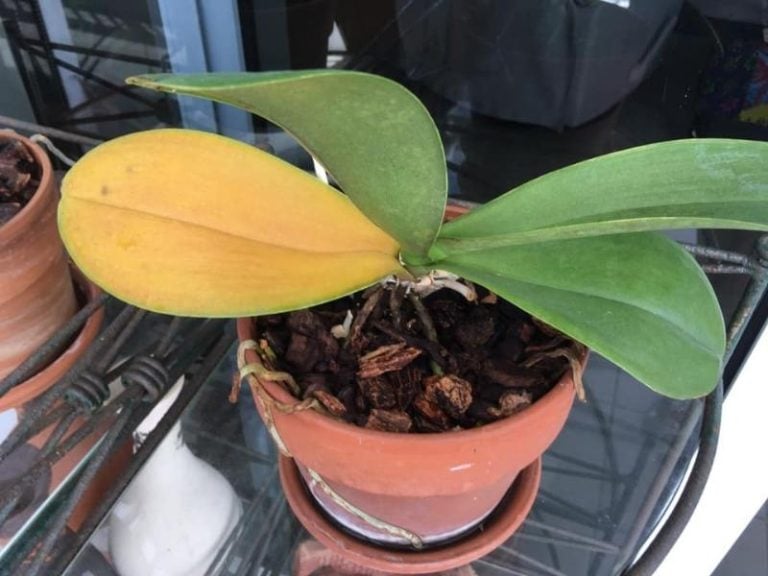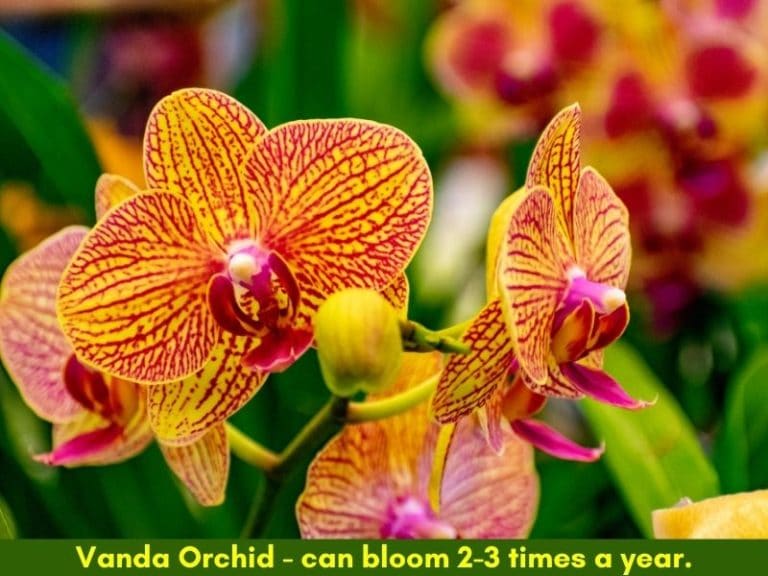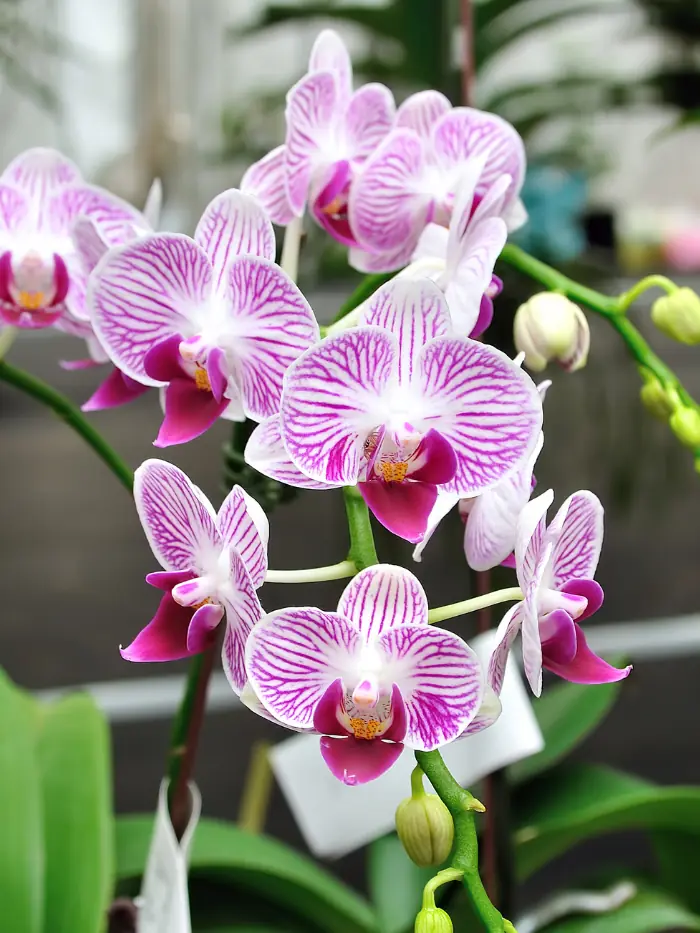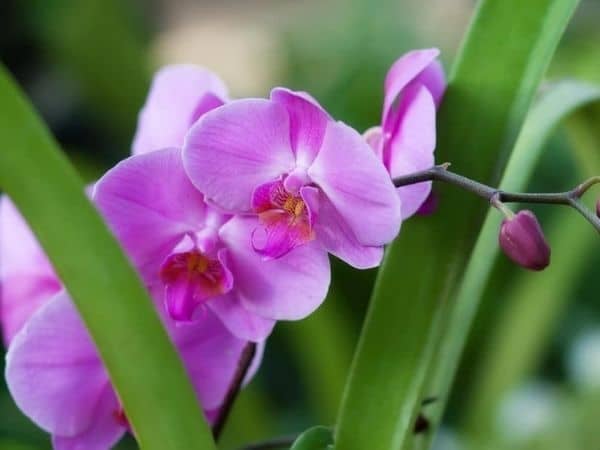Orchid Watering Guide: How Often to Water the Plant
Orchids (Orchidaceae sp.) are dramatic, beautiful plants that thrive in well-draining, moist soils. However, moisture imbalance can cause these ornamental plants to dehydrate, resulting in problems such as leaf yellowing, wilting, and bud blast.
So, how often should you water your orchids to avoid overwatering or underwatering?
There is no definite number of times to water your orchids in a week. How frequently you should water them depends on the variety, potting mix, type of planting pot, season, humidity, and temperature. On average, water orchids once every 7-10 days as soon as the potting mix dries out.
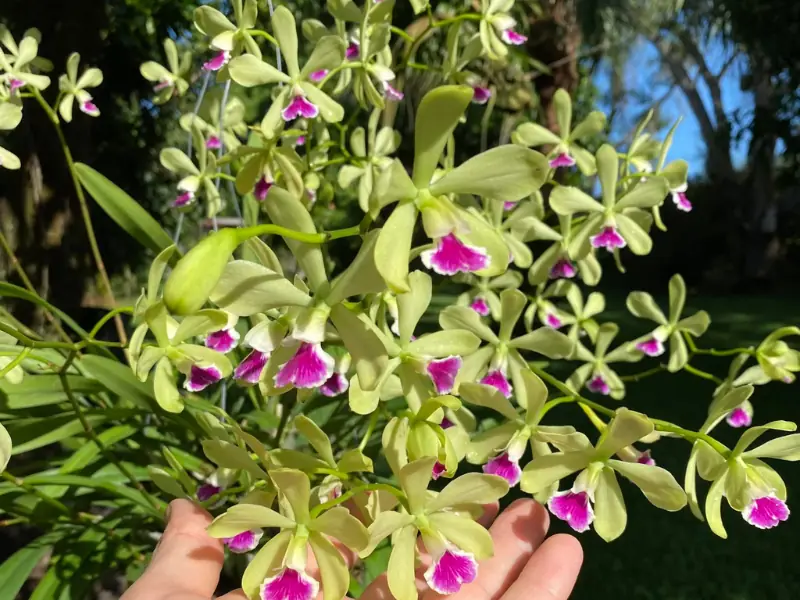
Each of the factors I’ve mentioned above impacts the plant’s water loss, thus affecting the plant’s water uptake differently.
What affects the watering frequency?
A good observation of the physical appearance of your orchids will help you determine how often they need watering. Generally, you should let the potting mix dry out a bit between watering intervals.
This keeps them vigorously healthy and reduces the potential for fungal diseases. Most orchids are watered either twice or thrice per week after an inch or two of the topsoil dries to the touch.
The following are some of the factors that determine how often you should water your orchids:
Orchid’s species
There are various types of orchid plants, and they have different water requirements. Some orchid varieties have thick, bulb-like tissues that store water. The bulbs reserve enough water for the plants in case of an extended dry spell. These species of orchids do not require frequent watering.
Other species of orchids only have roots and leaves for food and water storage. These orchids deplete their water reserves much quicker, so they appreciate frequent watering.
Season
Your orchids will need frequent watering in the summer since days are longer than nights. This is to replace the high rates of water loss through evapotranspiration.
During the growing season (summer), your orchids will need regular irrigation, about 2-3 times per week, unlike during their resting period in the winter.
Potting mix

Orchids appreciate a well-draining and moisture-retaining potting medium. Potting media with a high water-retention capacity, such as sphagnum moss and coconut husks, need less watering.
On the other hand, coarse, inorganic potting mixtures need frequent watering. The large pieces of potting mix leave more air spaces that hold less water. Therefore, your choice of the potting medium should determine how often you water your orchids.
Humidity
Orchids flourish in medium to relatively high humidity. In low humidity, the potting medium and the roots dry out too fast due to the increased rate of plant water loss through evapotranspiration.
Thus, orchids growing in low humidity need regular watering, unlike orchids in areas with medium or high humidity. You can raise the humidity levels by misting your plants twice a day or using a humidifier.
The type of pot
Plastic planting pots retain moisture for a longer period. This is because water only evaporates from the top surface of the container. The bottom of the plastic planting pot remains moist as only the top part dries out.
Meanwhile, in clay planters, water evaporates evenly across the pot’s surface; thus, the potting mixture dries out faster.
How do I know if my orchid needs water?
Orchids don’t like to be overwatered or underwatered. You want to ensure you know when the plant needs water instead of just sticking to a strict watering schedule.

Here’s how you can tell your orchid needs water:
- Dry topsoil: if an inch or two inches of the topsoil dries to the touch, you should know that your orchids need water. You can determine this using a screwdriver, a pencil, or your fingers. If the soil test shows that the soil is moist, do not water your orchids. If it is dry, then water your plants.
- Yellowing orchid leaves: insufficient water reduces the plant’s photosynthetic ability, reducing chlorophyll formation. Lack of chlorophyll leads to chlorosis (yellowing of leaves). Thus, when the leaf tips turn yellow and brown, your orchids need watering.
- Grey roots: grey roots are a sign of under-watered orchids.
- Bud blast: this is when orchid buds wither and fall off instead of opening up to reveal the beautiful flowers within. Bud blast is caused by traumatizing changes in the orchids’ growing environment, one of them being a decline in plant water levels.
- Wilting: The University of Kansas Research and Extension Center cites overwatering and underwatering as reasons why orchid leaves may wrinkle and die. [1]
Do you water orchids from the top or bottom?
The best way to water orchids largely depends on the type of potting mix. For orchids growing in sphagnum moss, it’s more effective to water from the bottom, whereby you soak the pot in a basin of water. This gives the moss enough time to hydrate.
This strategy, however, doesn’t work well for orchids potted in bark. To properly saturate the bark pieces, place the pot in a bowl and water from the top by pouring water over the bark until the bowl is full.
If you water from the bottom by pouring water into the bowl before inserting the pot, you’ll likely push the bark out of the pot.
Should you mist an orchid?
Yes, misting helps improve humidity and keeps pests such as spider mites and mealy bugs at bay.
In humid conditions, water evaporates slower, reducing the need for unnecessary watering that might lead to waterlogging. Misting also keeps the soil moist for your orchids without making it soggy.
Spider mites and mealy bugs feed on dust and the plants’ sap. So, misting removes the dust that might attract pests and protects the plant from significant damage. If possible, mist your orchids twice a day using fresh rainwater.
How long can orchids go without water?
Orchids are tough plants and can go for 2-3 months without water. These drought-hardy ornamentals store water in the roots or pseudo bulbs, enabling them to survive when left to dry out.
Thus, if you leave your beautiful orchids unattended for two weeks, do not worry, as you can still revive them. Do not miss that vacation or family get-together for fear of your orchids drying out.
While orchids can go for months without water, it is advisable not to leave them in peat moss. Peat moss is not a well-draining growing medium. Poor drainage leads to waterlogging, which causes root rot disease. Root rot disease damages healthy roots and leads to the death of your orchids.
Conclusion
The variety of orchids largely determines the plant’s watering schedule, as the bulbous varieties hold water longer than those without bulb-like tissues. The season, humidity, potting mix, and type of pot also affect the watering frequency. The rule of thumb is to water your orchids as soon as the top 1-2 inches of the soil feels dry to the touch.


